Elgin Cathedral
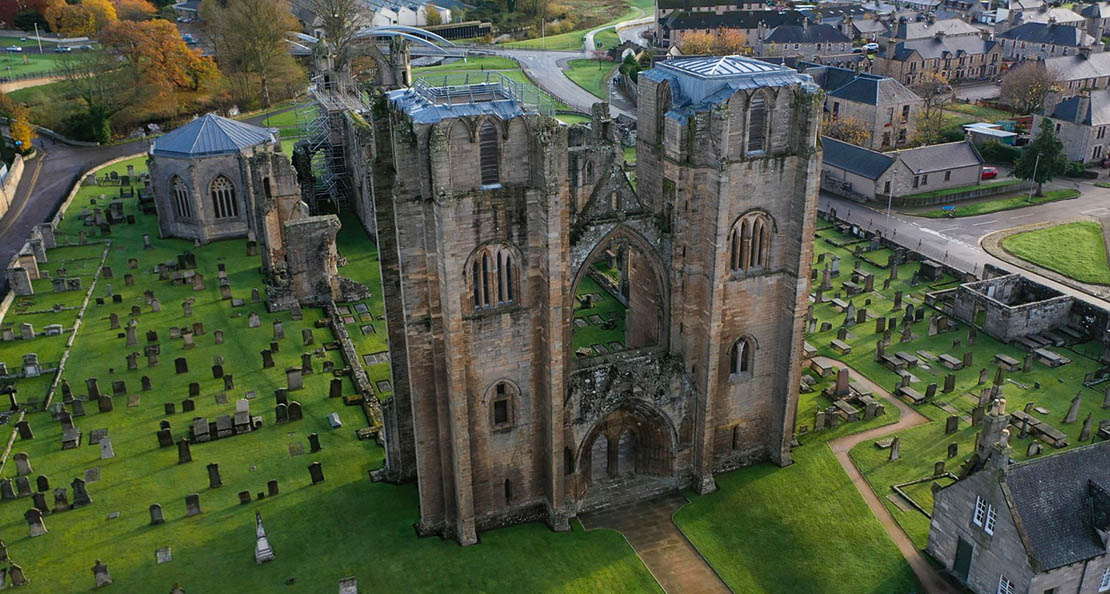
The town of Elgin is the capital of Moray in northeast Scotland, and at its centre lies Elgin Cathedral. Also known as "The Lantern of the North" the ruin of the Elgin Cathedral was once one of Scotland's finest 13th-century medieval cathedrals and in its time must have been a wondrous sight.

Even as a ruin, Elgin Cathedral is still an impressive example of beautiful medieval architecture with its two west front large towers, octagonal chapter house and ornate archways. A large empty lancet window can be seen between the towers, the stained glass is long gone. The morning sun beating through the east windows must have been glorious and impressed god-like vibes to the worshippers of the time.
Coopers Park is right next to the Cathedral, and I remember seeing it countless times as a child while playing there, I used to think it was Castle Grayskull from the He-man TV show!
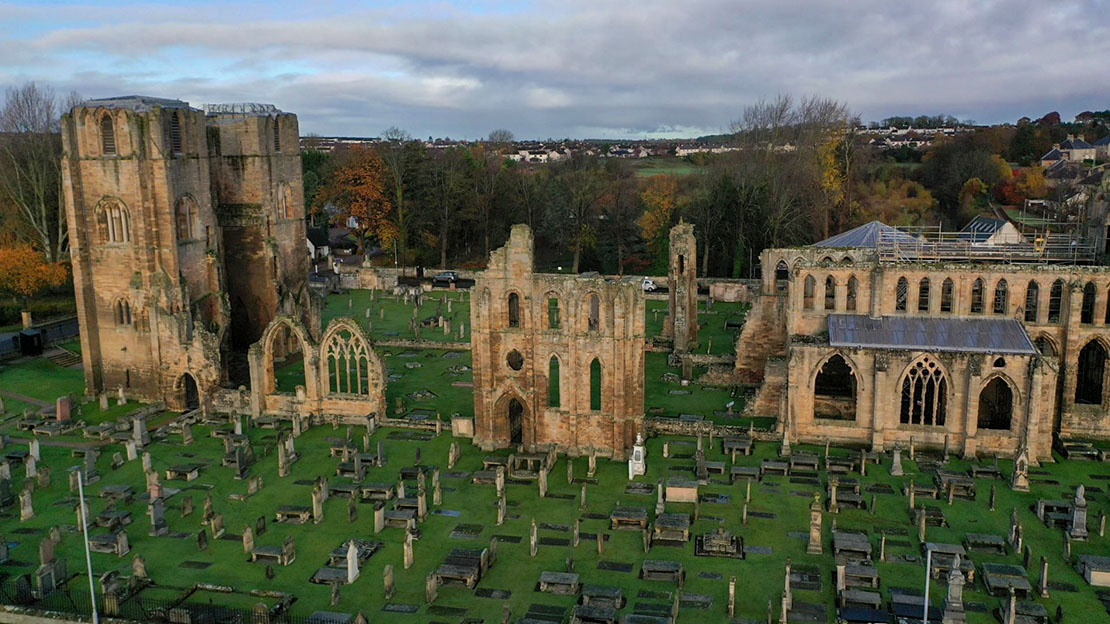
The building of Elgin Cathedral
The Cathedral was built in 1224 and was originally set to be constructed at Spynie near the Bishops residence, but was considered to be too isolated to be a safe place to build. A new site at Elgin, 2 miles to the south, was granted by King Alexander II near the River Lossie for a cathedral dedicated to The Holy Trinity.
The site blossomed into a large religious complex with many buildings associated with the cathedral, and a large perimeter wall enclosed the entire site.

Cathedral in decline
Although many Cathedrals were used as parish churches after the Scottish reformation (see Dornoch Cathedral), the congregation instead moved to St Giles parish church within central Elgin instead. Without maintenance, the days of Elgin Cathedral were numbered. In 1568 the roof was stripped of its lead to pay for the upkeep of an army. This was double the tragedy as the lead was lost after the ship sank in Aberdeen harbour and the cathedral was significantly weakened to the elements.
In 1710, the large central tower completely collapsed, destroying other parts of the structure too. Elgin Cathedral was now even more exposed to weather and ransacked to provide materials for construction in other areas of Elgin.
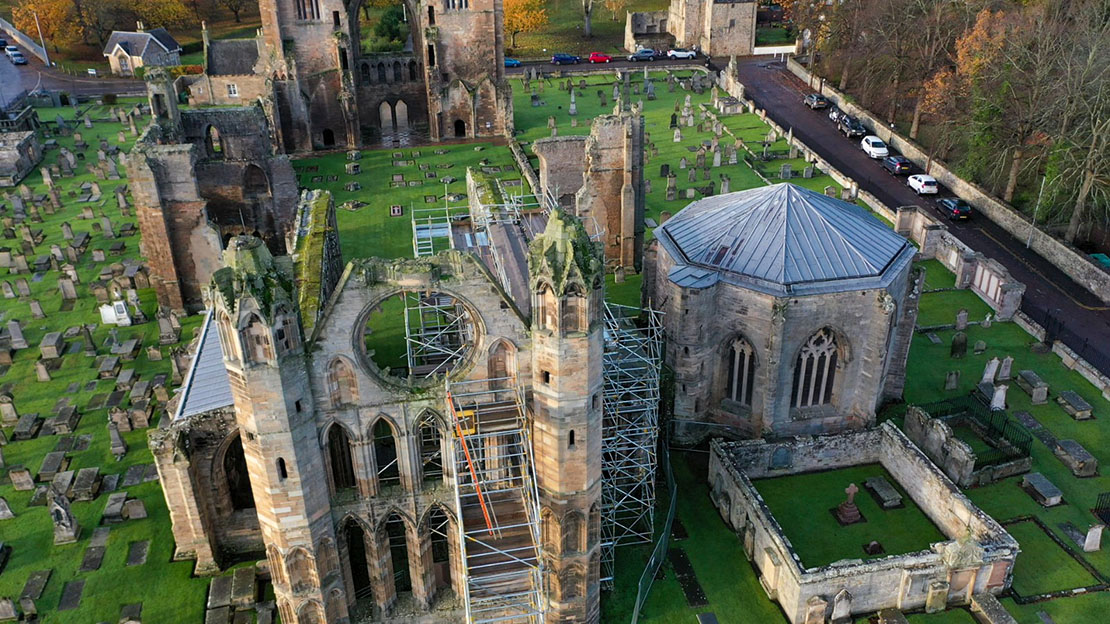
Design of Elgin Cathedral
The design of the building is similar to other cathedrals in Scotland and the rest of Britain and is a cruciform design. The structure is comprised of sandstone blocks and includes many fine carvings and features.
The main west entrance is wonderfully ornate with many inset layers of fine mouldings. This entrance has two large square towers simply named the north west tower and south west tower, both in remarkably good condition, likely due to their chunky/robust construction, but also the stalwart care of Historic Environment Scotland.
Passing through the double doors of the main entrance, the interior of the cathedral is empty and gives little clue to the original layout, but there are remnants of large stone columns and enough remaining ruins to envisage the rough dimensions of the cathedral. There is also no trace of the large central tower that must have dominated this structure in its hay day. Please see the image below showing what it would have looked like in 1538, complete with central tower, roof, nave and south transept. It must have been a truly awe-inspiring structure.
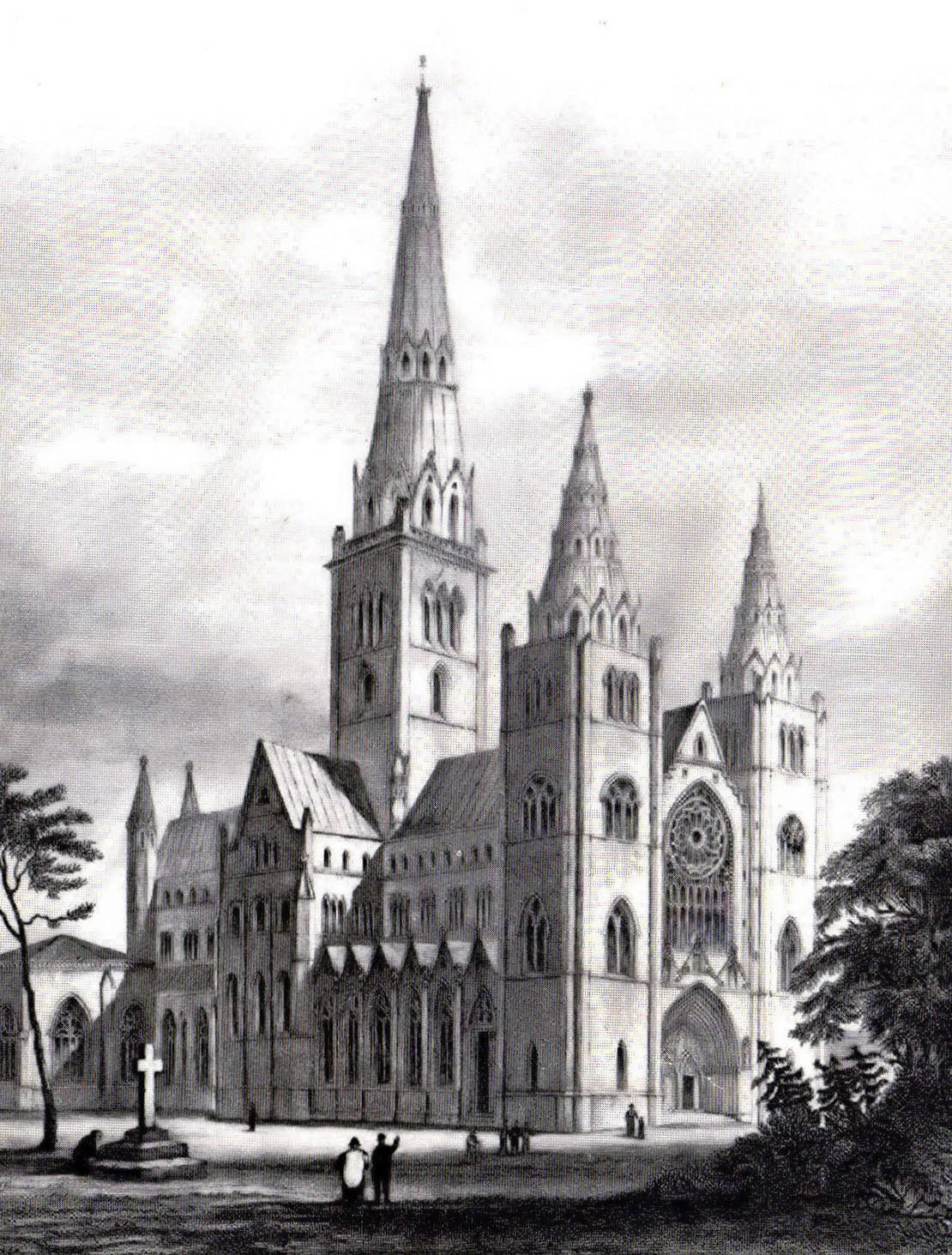
Octagonal chapter house
The octagonal chapter house is still mostly intact and dates from the late 1200s. Features include a reading lectern and many carvings of animals and faces. Most impressive is the rib vaulted ceiling and central column, an amazing testament to the engineers of the time. Access to the chapter house alone is worth the price of admission.
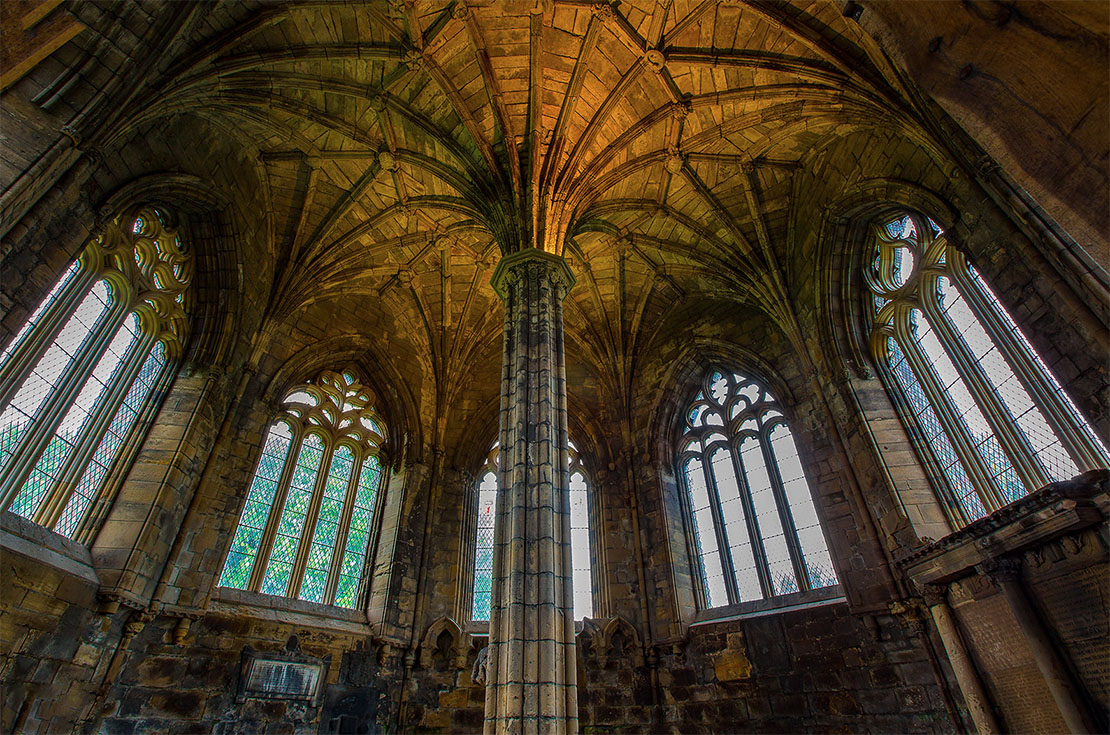
Who burned down Elgin Cathedral?
There were actually two fires that damaged Elgin Cathedral, one in 1270, and the more famous and more damaging one in 1390 instigated by Alexander Stewart also known as the Wolf of Badenoch. Many people think that the cathedral was left to ruin after this egregious attack, but it wasn't till after the reformation some 170 years later that the roof was finally removed and it was truly left to decay... So today's cathedral ruins are not a result of the Wolf of Badenoch but simply changing times.
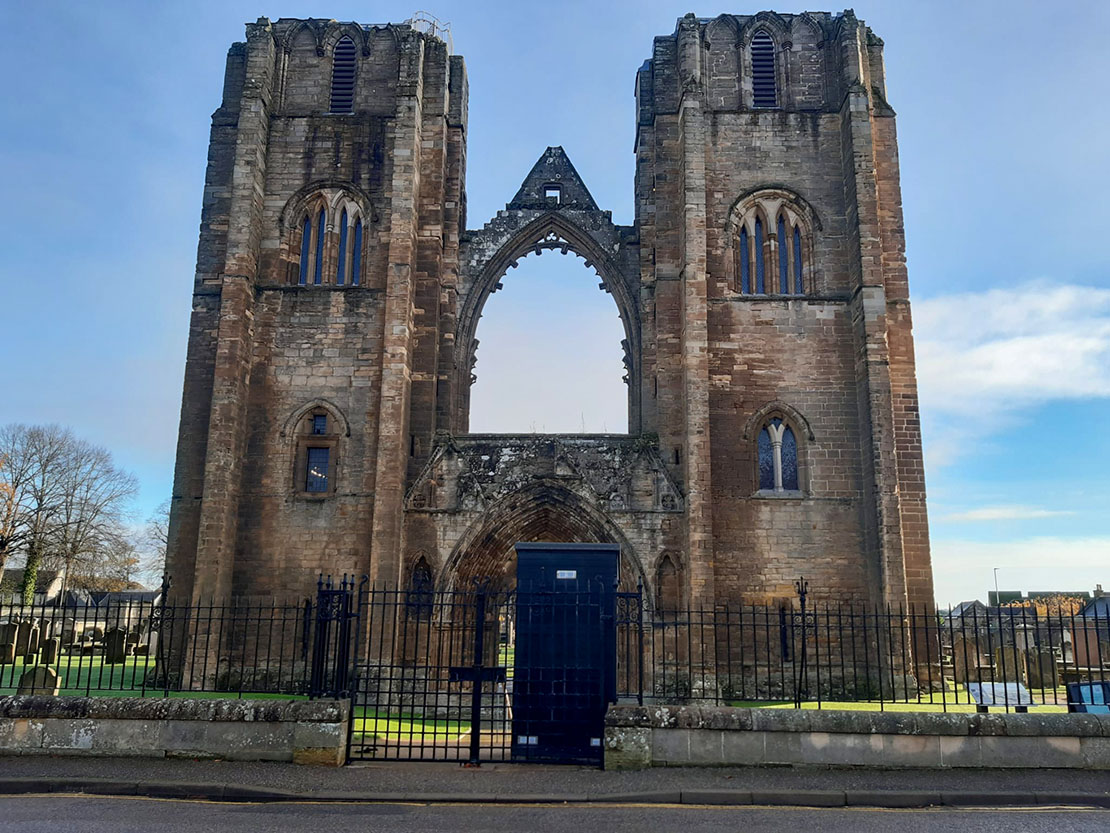
Cathedral grounds
There is a great deal to see around the cathedral grounds with many information boards highlighting items of interest.
Pictish cross-slab
A large Pictish era granite cross-slab can be found in the grounds and actually predates the cathedral itself dating from around 900AD. The slab was found near the medieval church of St Giles, in 1823, also in Elgin. One side of the cross shows a Christian Cross, and the other a hunting scene with Pictish symbols.
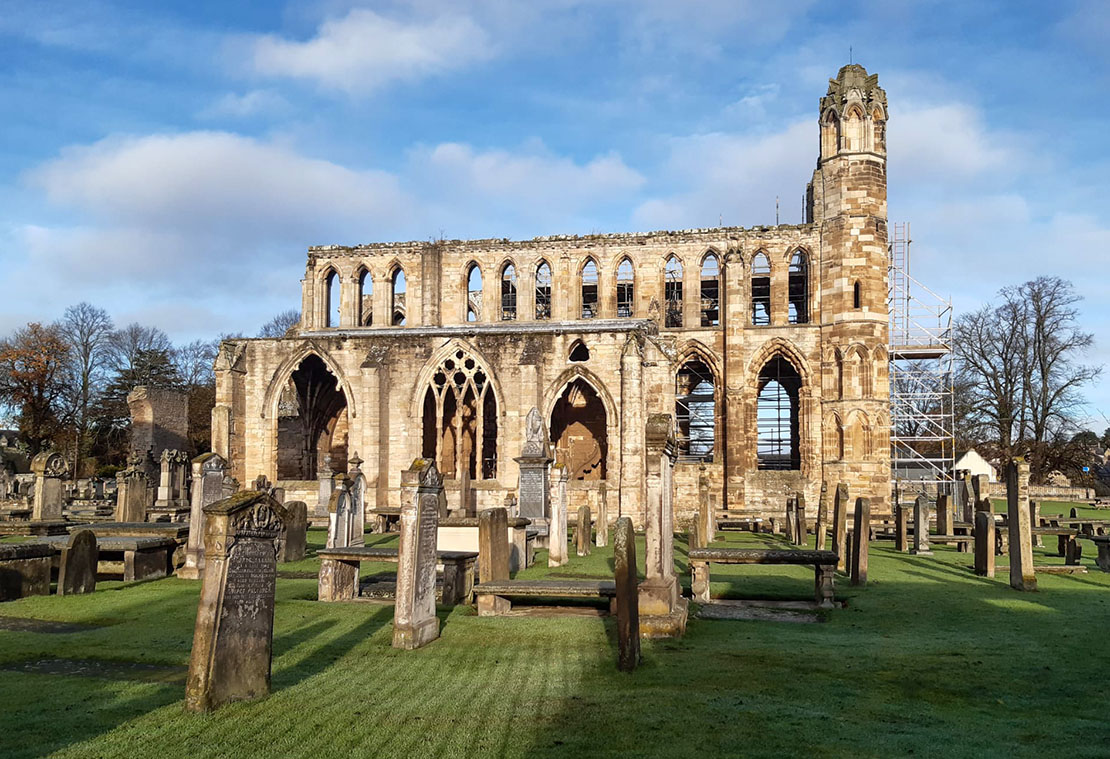
Tombs
Many tombs and graves lie around the grounds, including Bishop John of Winchester located in the south choir chapel. Alexander Gordon, 1st Earl of Huntly is also buried here in a fine stone carved tomb.
Interior exhibits
There are a few interior areas where you can view carved stones, carved faces, glass fragments and information boards on the bishops of Moray. One of the areas also plays audio of monks singing which really adds to the atmosphere.
One of the ground level exhibits showing large stone carvings thoughtfully includes an interactive display allowing people with disabilities to explore the tower's upper levels without having to traverse the spiral staircases. Just by touching the screen you can look around the rooms and find out more information. Well done Historic Environment Scotland.
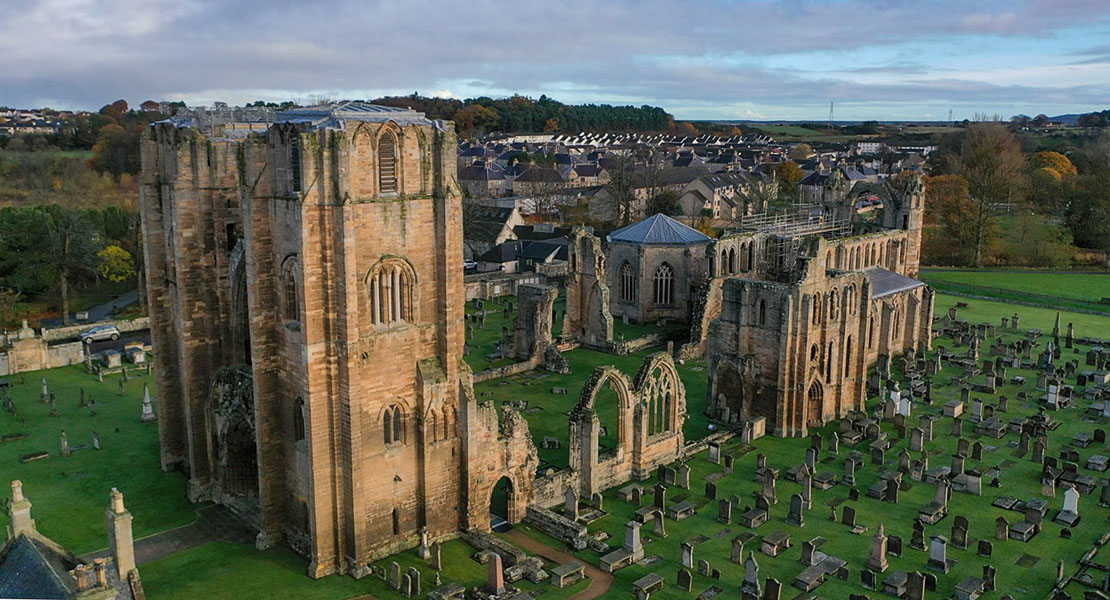
Tower lookout point
It's possible to climb to the top of the north west tower, by climbing the spiral staircases. Not for the faint-hearted but worth the climb for the panoramic views over the cathedral grounds and Elgin itself.
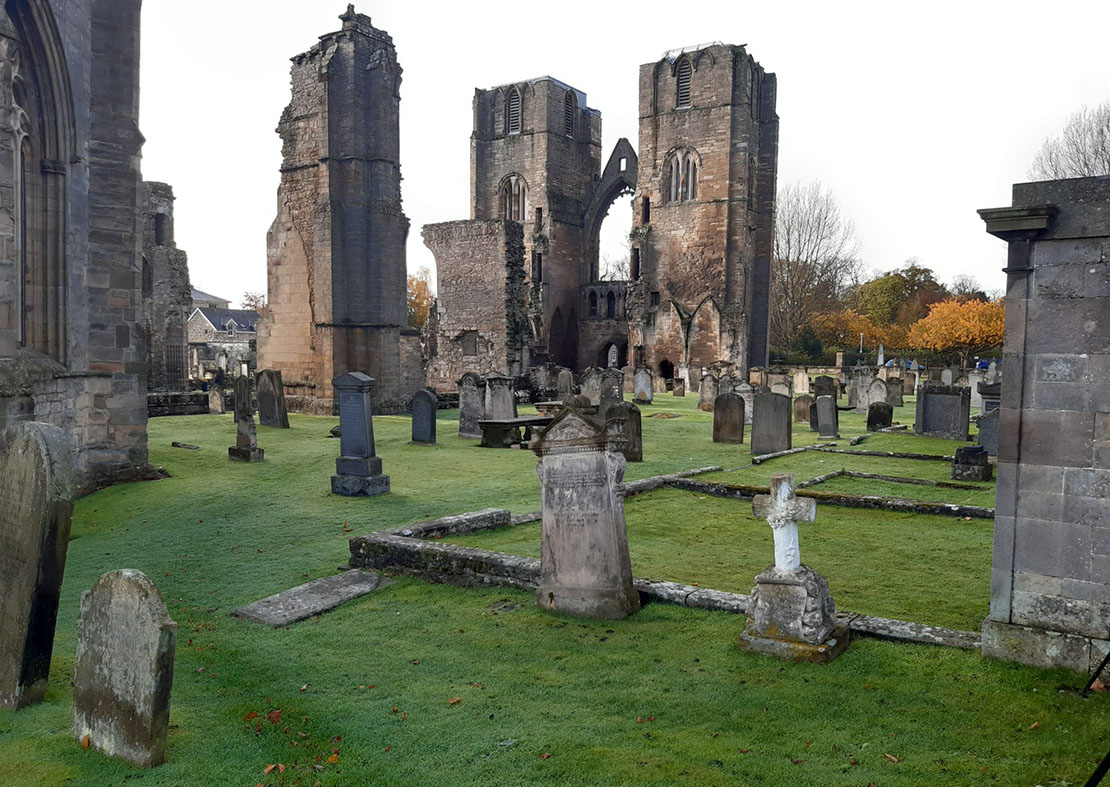
Biblical garden
Adjacent to the Cathedral grounds is a lovely biblical garden, established in 1996. The path is in the form of a Celtic cross, plants mentioned in the bible are planted here, as well as statues of biblical figures and plaques with bible excerpts. Even though I'm not religious it is a lovely garden and bursts with colour in the summer months.
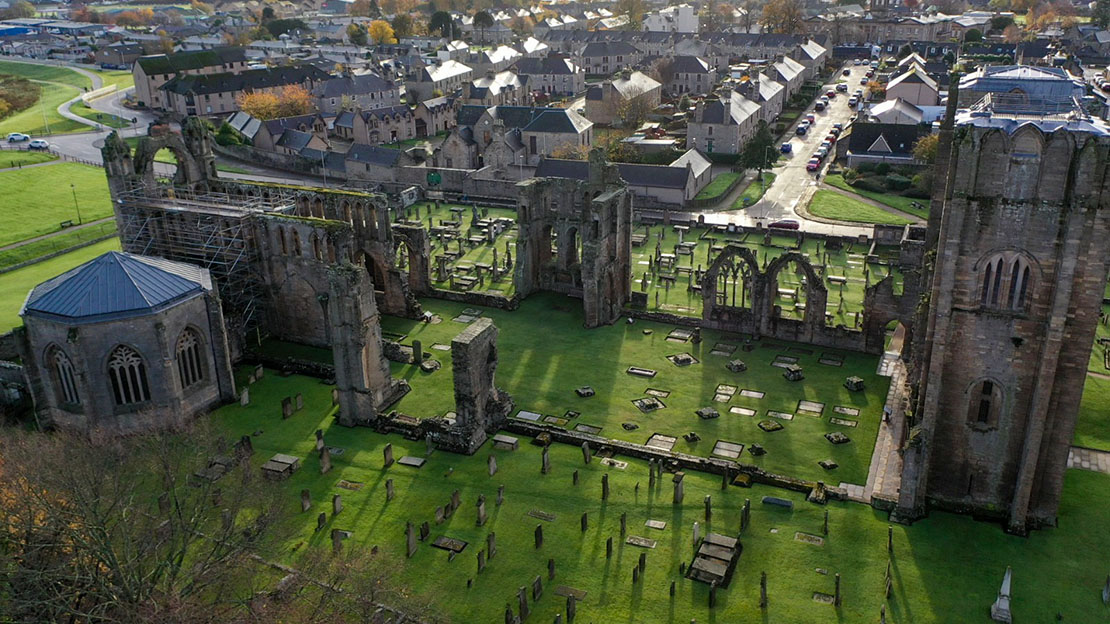
Bishop's Palace
Although not on the main grounds of the Cathedral, the Bishop's palace or Precentors House exists just across the road from the West entrance. It is not accessible but easily seen from the road.
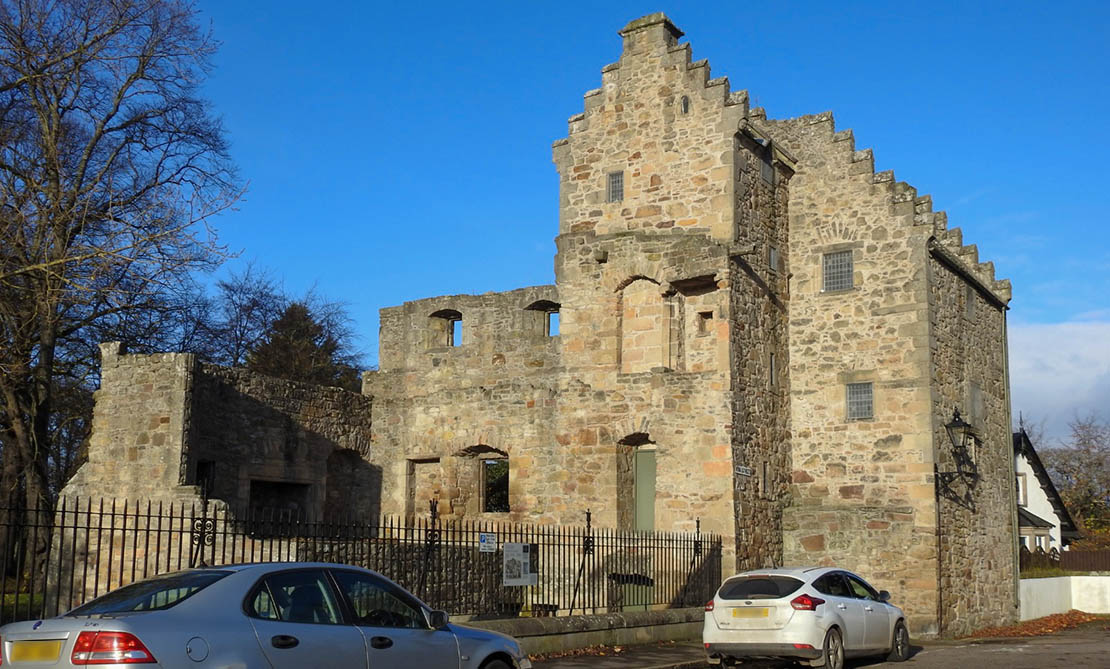
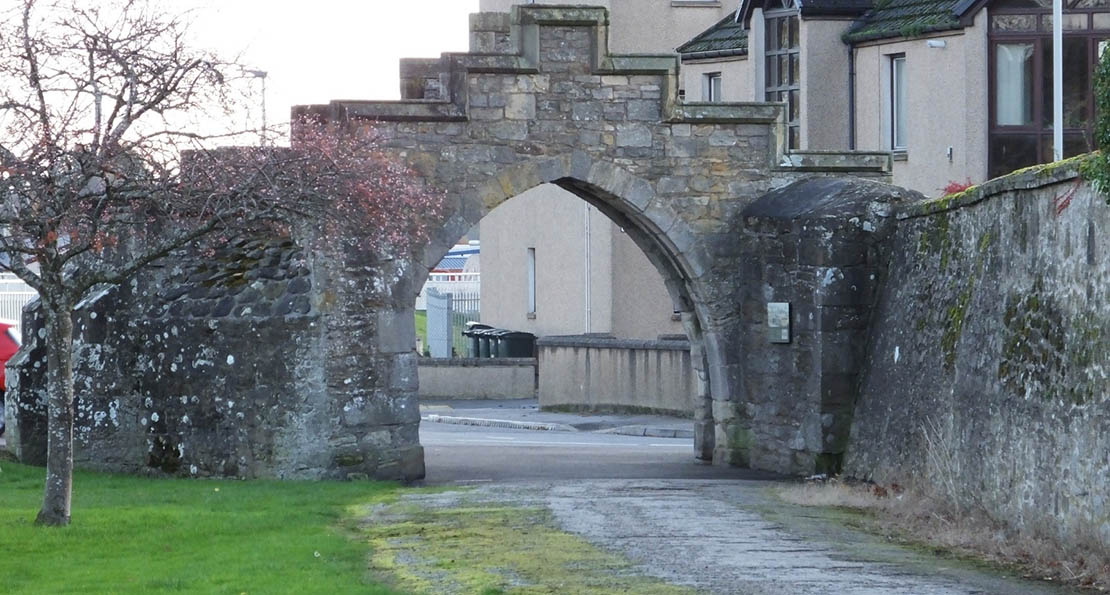
Elgin Fireworks Display
The Cathedral itself works as a fantastic foreground for the annual Elgin Fireworks display (sadly cancelled due to Covid-19 in 2020 and 2021). The fireworks exploding in the sky above the cathedral makes for a fantastic photograph.
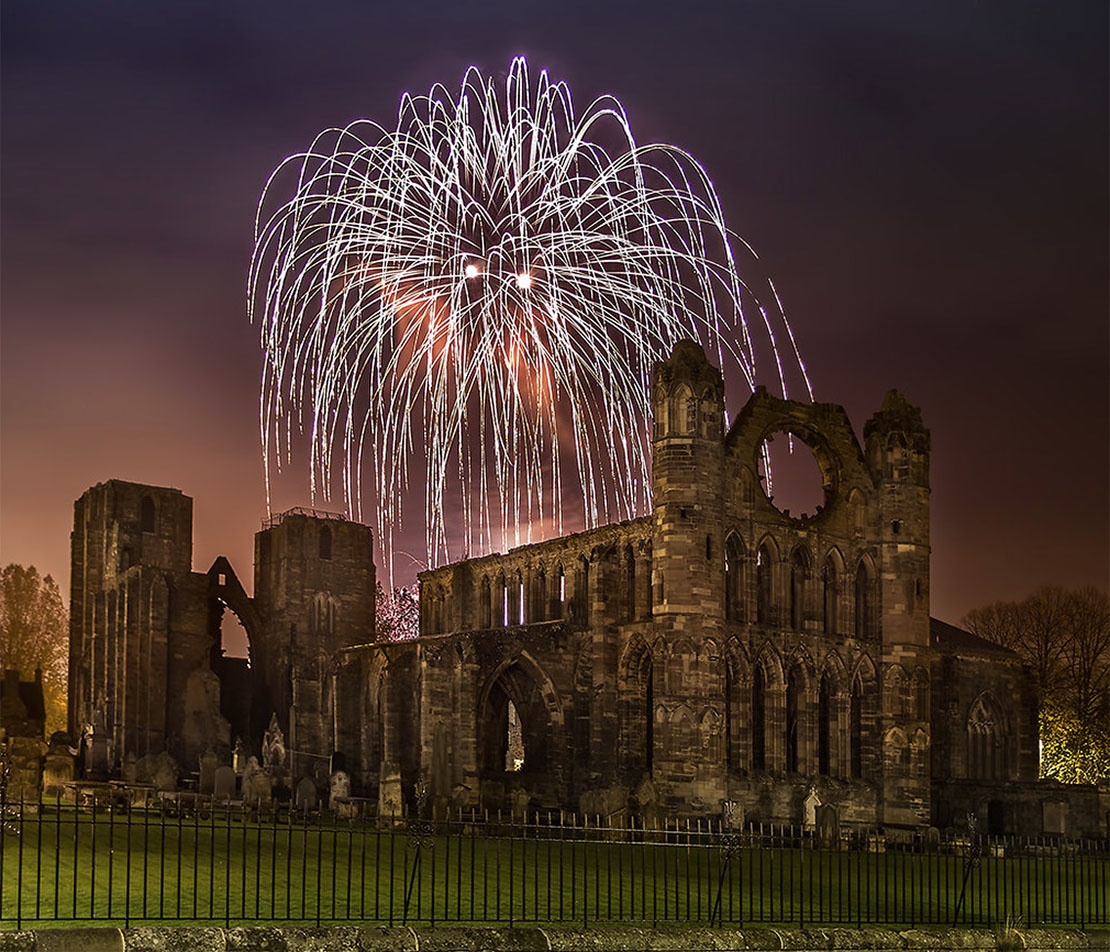
Historic Environment Scotland
The cathedral is operated by the Scottish charity Historic Environment Scotland and is open to visitors between April to September between 9.30 am and 5.30 pm, then October to March between 10 am to 4 pm. The staff are great and will be delighted to welcome you. If you are planning to visit Spynie Palace you can buy a joint ticket to visit both and save some money.
Conclusion
Visiting Elgin Cathedral is a must on your trip around northeast Scotland especially if you have an interest in beautiful medieval buildings or ecclesiastical architecture. Edinburgh need not be the only place you visit in Scotland, come to Moray you will love it!
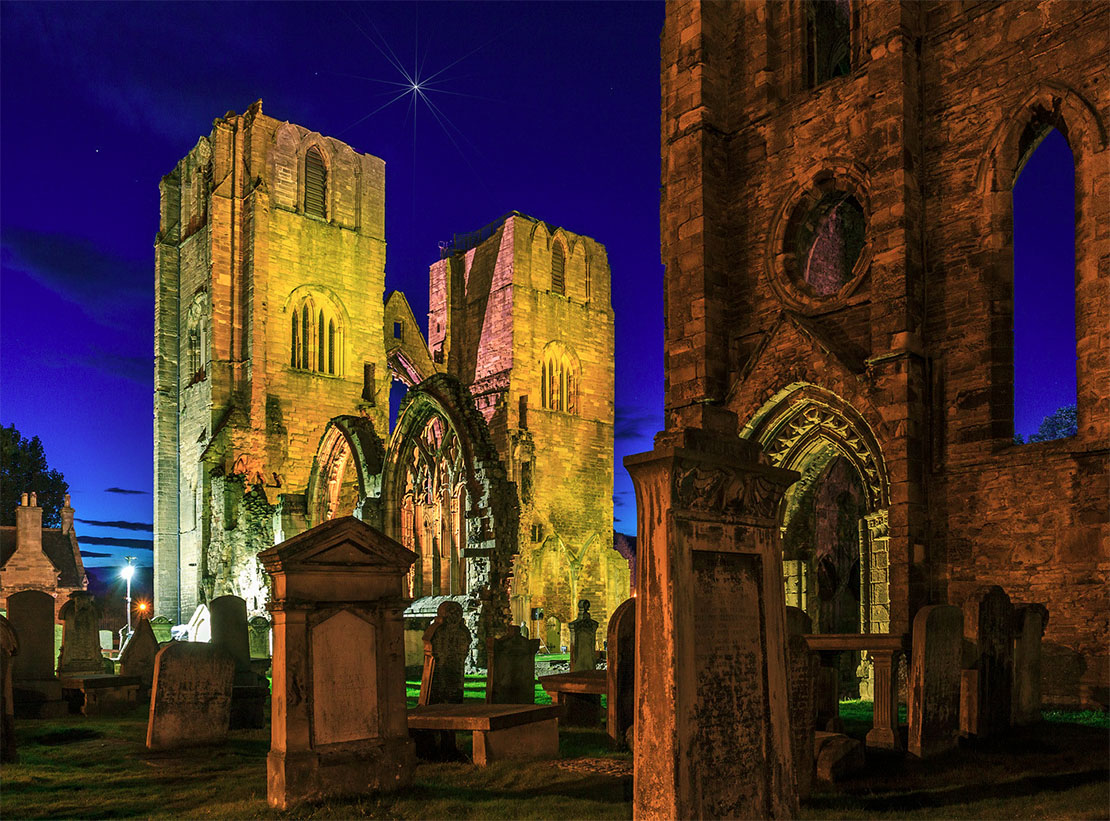
Photos provided by John Luckwell and Alan Butterfield.
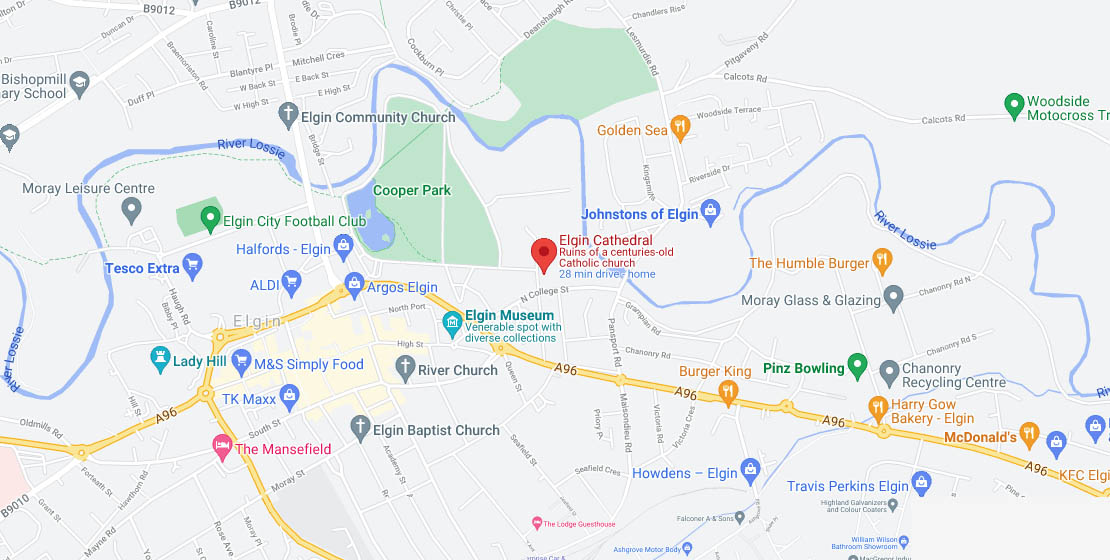
All information was correct at the time of writing, please check things like entry costs and opening times before you arrive.
Claim Your Free 6 Day Travel Itinerary:
Simply enter your email and we'll send it your way!

Hi, please leave a comment below, or why not start a discussion on the forum?
Comments:
ChrisLBS
11th of April 2022 @ 19:39:13
Hi Joan, that's a very interesting comment with regards to your ancestors emigrating to Canada... much colder there than in Scotland!
Joan Russell
11th of April 2022 @ 16:25:50
I enjoyed the detail in this article and the beautiful photographs honouring this impressive medieval cathedral. What a history! I could imagine my great grandfather James Russell (1860-1932) and his 3 older brothers scampering about in these ruins, daring each other to climb and to jump, as boys are wont to do! They sailed for Upper Canada with their father (a blacksmith, we speculate) and arrived about the time Canada became a country, in 1867.
ChrisLBS
3rd of April 2022 @ 21:14:48
Glad you enjoyed the article Shirley, thanks for reading.
Shirley Mayfield Kelly
3rd of April 2022 @ 20:02:02
Thank you for a very informative and intriguing article.It was well worth the read.
Clynderboy
25th of January 2022 @ 14:24:12
Writing this article must have been a challenge, as there is so much information available and this is a nice 'condensed' piece covering the main points. To my shame, having lived in Moray for 43 years, I have yet to visit the cathedral ... I need to put that right and this article has given me a push!
